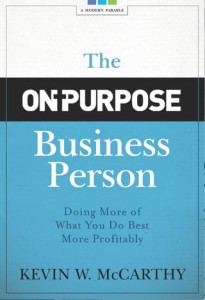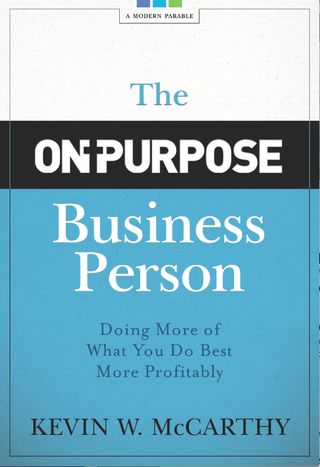Sales prospecting and farming represent two modes of selling.
Be clear about which one works and works for you.
Over the years, clients have engaged On-Purpose Partners to assess and design their sales architecture, often with  On-Purpose® being foundational content. Such engagements demand a blend of
On-Purpose® being foundational content. Such engagements demand a blend of
- strategy
- psychology
- marketing
- selling
- curriculum development
- business
- and more
One of the first design decisions to assess is if the client’s business, mindset, and preference is for building a prospecting or a farming sales approach.
Many other company decisions and investments hinge on this simple differentiation.
As a keynote speaker to sales organizations at conferences and conventions, I’ve learned to psych out their leanings early. Whether it be an insurance, real estate, or direct sales organization, there are similarities and differences in their cultures and approaches; yet these two generalized worldviews on selling remain staples of the selling process.
Corporate executives set the tone but often a product or service defines the sales approach. Generally, if a company is in manufacturing or is technology oriented, they tend to favor the prospecting approach mentioned in this On-Purpose Business Minute. Customers are part of the “human resources” supply chain of logistics and transactions. Here people are deployed to meet business objectives by digging out customers.
Company executives who favor the farming approach, however, tend to focus more on cultivating relationships.
This longer-term view of people sees a long tail of repeat sales and referrals in the context of the lifelong value of a customer. It affects commitment and investment in planning, people, operations and, ultimately, customer service standards and training.
Salespeople as farmers or prospectors are typically engaged in very similar activities of making sales calls, gathering information, preparing presentations, and closing deals. Astute salespeople readily assess the best approach for a particular book of business. If you find yourself scratching your head wondering what the higher-ups are thinking, then there is a good chance they are (or you are) oblivious to the culture they’re creating in the field. They’re prospecting for immediate nuggets of sales while you’re growing a crop of relationships and caring for a soil of the relationship … or vice versa.
Be aware of which approach is best suited to the company, customers, and, frankly, your personal style that plays into your definition of success.
Years ago, a friend came to me ready to pull his hair out by the roots. He loved where he worked as an admissions representative at a private vocational college. The problem was he is a farmer and he was being measured as a prospector. Every phone call, email, and piece of mail was measured and accrued to his measurement system.
Together we designed a simple tool to engage student candidates into a conversation instead of an information session. At great risk to his metrics, his call volume went down, his mailings decreased, and his number of “contacts” declined. The first month, his boss was all over him for non-performance. However, by the second month, his admissions soared to the number 3 spot of all reps—an achievement he had never before attained. Within 3 months, he was leading all reps and out-distancing them. Soon two reps approached him and asked what he was doing differently. Within a month all three of them held the top 3 positions.
They had discovered farming versus prospecting!
This story isn’t to propose that prospecting is bad. On the contrary, it is to say that the culture and the sales culture didn’t match and the results were impoverished by comparison to a proper match.
By the way, the story gets even better. In time, the leadership altered the system to reflect a farming approach that was people-centric. Under the “prospecting” approach, student turnover (withdrawals from the college) was very high. With the “farming” approach, admitted students tended to stay in place. This was an unexpected bonus, but an intuitive result.
The point of this On-Purpose Business Minute for the executives, VPs of Marketing & Sales, and Sales Managers is to assess your industry, company, and culture. Decide which approach is best suited to creating the customer experience you wish to deliver. Armed with this information, evaluate your company language, alignment, and operations to see if you’re on-purpose or not.
Sales prospecting or farming? Now you’re a bit more informed to make wiser decisions.
Be On-Purpose!
Kevin



 or original intent—even when the founder is still running the business! It is a costly loss of strategic advantage, employee and customer engagement, and business profits!
or original intent—even when the founder is still running the business! It is a costly loss of strategic advantage, employee and customer engagement, and business profits!
